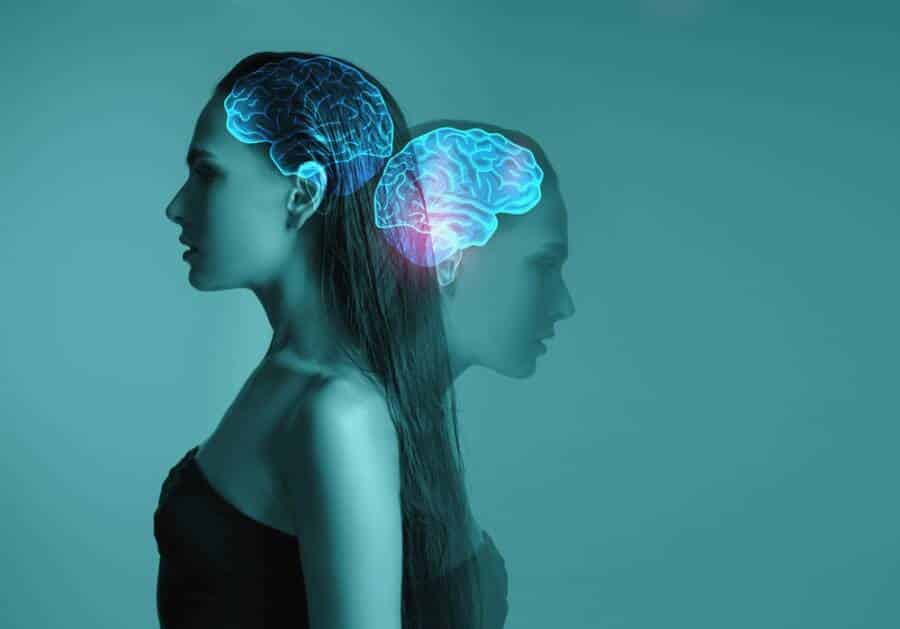Alzheimer’s disease is a degenerative brain disorder that gradually destroys memory, reasoning, language, and eventually, the ability to carry out the simplest tasks. As the most common form of dementia, it affects millions of people worldwide and places a heavy emotional, physical, and financial burden on families and caregivers.
The disease progresses in stages, typically categorized as early (mild), middle (moderate), and late (severe). Each stage brings its own set of challenges and symptoms, and understanding them is key to providing good care and support. Today, we’ll explore these stages in detail, outlining what to expect and how the symptoms evolve.

Stage 1: Early Stage (Mild Alzheimer’s)
The early stage of Alzheimer’s is the most subtle and often the most difficult to recognize. People in this stage may still function independently and seem healthy, but they begin to experience increasing difficulty with memory and cognitive functions. At this point, these symptoms might be mistaken for normal signs of aging.
People may begin to forget recently learned information or important dates and events. They might repeatedly ask the same questions or tell the same stories in a short time span. Misplacing objects becomes common, especially placing items in unusual locations, like a phone in the refrigerator. Although they might still manage their own finances and daily routines, tasks that require complex thinking, such as planning a dinner party, following a recipe, or balancing multiple tasks, become more challenging.
Language begins to present difficulties, with people struggling to find the right words during conversations. They may pause more frequently or replace forgotten words with vague substitutes, making communication less precise. Names of familiar people or everyday objects might slip away. People may also begin to withdraw from social activities or hobbies they once enjoyed, partly due to the frustration or embarrassment of these changes.
Mood and personality changes can also appear. A person who was once cheerful and outgoing might become anxious, irritable, or depressed. Their confidence may diminish, and they might become unusually passive or hesitant. Judgment can also be impaired, leading to poor decisions such as dressing inappropriately for the weather or falling for scams.
Diagnosing Alzheimer’s in this stage typically involves cognitive and memory tests, physical exams, lab work, and brain imaging. These tests help rule out other causes and confirm patterns consistent with early Alzheimer’s. Once diagnosed, it’s important to begin planning for the future, including discussions about healthcare preferences, legal arrangements, and potential caregiving needs. Encouraging independence while offering appropriate support can help individuals maintain a sense of autonomy during this stage.
Stage 2: Middle Stage (Moderate Alzheimer’s)
The middle stage of Alzheimer’s is often the longest and can last for several years. During this phase, the symptoms of cognitive decline become more obvious and begin to interfere more significantly with daily life. Individuals might still recognize loved ones and maintain some level of independence, but they require more supervision and assistance.
Memory issues become more pronounced. People might forget their own address, phone number, or the names of close family members. They often lose track of time and struggle to differentiate between past and present. Confusion about where they are or how they got there becomes more common. Recognizing familiar places and navigating well-known environments becomes difficult, which increases the risk of getting lost, even in the neighborhood.
Language and communication skills deteriorate further. Conversations become more difficult as word-finding challenges increase. Sentences may become fragmented, and individuals might have trouble following or contributing to discussions. Misunderstanding written instructions or even simple verbal cues becomes common, and this can make everyday tasks like cooking, shopping, or taking medications more dangerous.
Behavioral and psychological changes tend to intensify during this stage. Patients might become suspicious or paranoid, believing others are stealing from them or trying to harm them. Mood swings, including episodes of anger, frustration, or crying, can happen without clear triggers. Repetitive behaviors, such as pacing, emerge as a result of internal anxiety and confusion.
Wandering is a major concern during the middle stage. A person may attempt to leave home in search of someone or something from their past, leading to potentially dangerous situations. Sleep patterns often change as well, and individuals may become restless at night or confused about whether it is day or night.
Physical coordination and motor functions begin to decline. Dressing, grooming, and personal hygiene require increasing support. Some individuals may develop problems with swallowing or chewing, which could contribute to weight loss or nutritional deficiencies. Incontinence may also develop as control over bodily functions diminishes.
Care during this stage becomes more intensive. Families may need to consider bringing in professional caregivers or exploring assisted living facilities. Creating a structured, safe, and predictable environment helps reduce agitation and confusion. Communication strategies must be adapted to meet the individual’s capabilities, using simple language and visual cues. Engaging the person in familiar routines and providing gentle reminders can promote a sense of comfort and stability.
Stage 3: Late Stage (Severe Alzheimer’s)
In the final stage of Alzheimer’s disease, cognitive and physical abilities are severely impaired. Patients become completely dependent on others for care and might lose the ability to respond to their environment, communicate meaningfully, or control movement. This stage is often the most emotionally challenging for families and caregivers, as their loved one may no longer recognize them or show signs of awareness.
Memory function is profoundly diminished. People typically cannot remember recent experiences, and they may not recognize family members or even themselves. They lose awareness of their surroundings and are often unable to make sense of what is happening around them. Even long-term memories, which tend to be preserved until this point, begin to fade away.
Verbal communication is extremely limited. People might say a few words or phrases, but coherent conversation is no longer possible. Facial expressions and body language might become the only means of expression. Despite the loss of language, individuals might still respond to familiar voices, music, or gentle touch, indicating that emotional connections can still be made.
The physical decline in this stage is dramatic. Most people lose the ability to walk without assistance and eventually become bedridden. Muscle rigidity and abnormal reflexes are common, and the risk of pressure sores and infections increases due to immobility. Swallowing becomes difficult, causing choking hazards, aspiration pneumonia, and serious nutritional deficiencies. Weight loss, dehydration, and frequent illnesses are typical as the body’s systems begin to shut down.
Incontinence becomes complete, and assistance with every aspect of personal care, such as bathing, feeding, toileting, and dressing, is required. The immune system weakens, making infections more frequent and harder to treat. At this point, palliative care or hospice care is often introduced to ensure comfort and dignity in the final stages of life.
Family members often struggle with the emotional toll of witnessing their loved one’s decline. Yet even in this stage, small gestures like holding hands, playing favorite music, and reading aloud can provide comfort and connection. For caregivers, focusing on quality of life, pain relief, and emotional well-being becomes the most compassionate form of support.
Current Treatments and Ongoing Research
There is no known cure for Alzheimer’s disease, but treatments are available to manage symptoms. Recently, disease-modifying therapies have shown promise by targeting amyloid plaques in the brain, one of the biological hallmarks of Alzheimer’s.
Researchers continue to investigate the causes and progression of the disease, focusing on genetics, lifestyle factors, and new treatment avenues, including immunotherapy and early detection through biomarkers. Clinical trials are ongoing, and there is cautious optimism in the scientific community about future breakthroughs.

The Conclusion Is…
Alzheimer’s disease is a devastating condition that affects not just the patients but entire families and communities. By understanding the three stages and recognizing the symptoms associated with each, we can provide better care, plan more effectively, and offer compassion throughout the course of the disease. While the path is undeniably difficult, support, education, and ongoing medical advancements continue to offer hope for those affected by this complex and heartbreaking illness.
Do you want to learn more about the 3 stages of Alzheimer’s, but from a caregiver’s perspective? We recommend reading Alzheimer’s Through the Stages: A Caregiver’s Guide.
Read also: Dementia: STOP Believing These 10 Lies!





